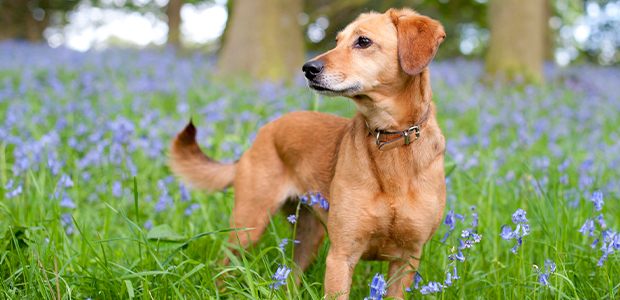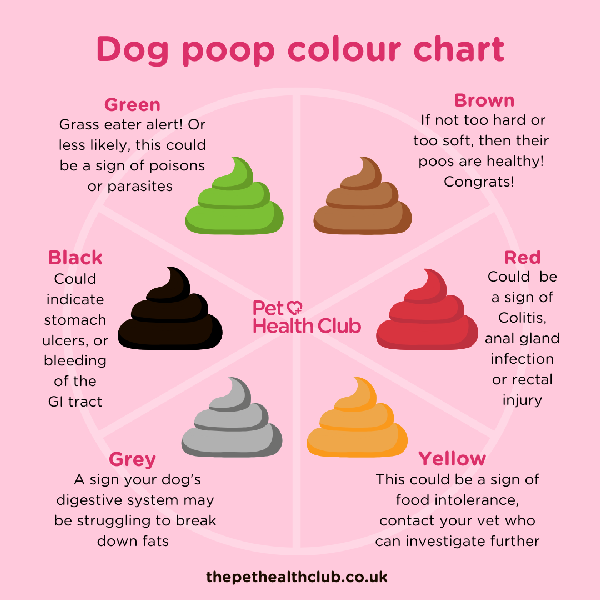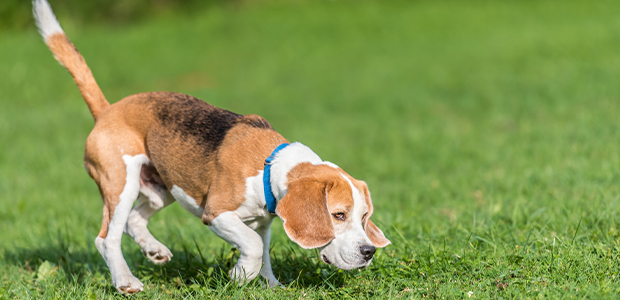Dog poo colour guide: what colour is your dog’s poo?
First Published: 11/06/2019
Last Updated: 31/10/2023
Did you know you can tell quite a bit about your dog’s health and wellbeing from checking the colour of their poo?
True story! As it turns out, the colour of a dog’s poo may be a precursor of health problems and if you know what to look out for, can serve as a useful indicator of when it’s time to seek the assistance of your vet.
Do you ever encounter black or yellow dog poop and wonder what may be causing it? Well, we have some answers for you…
Black
Very dark or even black dog poop can be a sign of stomach ulcers in dogs, or bleeding of the gastrointestinal tract. Black dog poop gets its colour because the blood isn’t fresh – it’s been digested and had time to darken.
What to do: Keep an extra eye on your dog’s droppings. If they’re losing weight and vomiting regularly as well leaving black dog poop, give your vet a call.
Grey
Grey poop is a giveaway that your dog’s digestive system is struggling to break down fats. This can occur either as a result of eating too many fatty foods, or of a bigger, more complicated problem with their pancreas.
What to do: If your dog has broken into your bin or stolen your BBQ snacks, you can probably put their grey/slimy poo down to that. If you know of no reason for their poo being this colour or if it persists, arrange to see your vet.
White-specked
It’s unlikely you’ll come across white dog poop, but if your dog’s poo has lots of white specks in it (that look like little rice grains), this is a sure-fire sign that they’ve got tapeworms.
What to do: Set about worming your dog ASAP! Your vet will be able to help you find a suitable product for treating tapeworm.

Red
Red poo, or poo that appears streaked or laced with red, can be a sign of a few things:
- Colitis
- Anal gland infection
- Rectal injury
There’s always the chance that the cause of red poop is a cut on the dog’s anus too, which is less of an immediate concern.
What to do: If you see any red dog poop, keep an eye out. Contact your vet if it happens repeatedly.
Pink or purple
If your dog’s poo is pink or purple in appearance, sort of like jam, contact your vet right away. It could be a sign of severe gastroenteritis.
Yellow
Yellow dog poop is usually a sign of food intolerance.
What to do: If you’ve recently changed your dog’s diet or you know they’ve eaten something they shouldn’t, think about reversing the change if yellow dog poop carries on for too long. If you haven’t made any changes and know of no reasons for your dog pooping yellow, have a chat with your vet. They’ll be able to investigate further and test for potential food intolerance issues.
Orange
The dog’s digestive system is effectively getting rid of the digested food earlier than it normally would, before the bile has had a chance to turn it into a normal and healthy-looking brown. This may indicate a liver or biliary problem.
What to do: Once again, keep an eye out and have a chat with your vet if symptoms persist.
Green
Your dog's been eating grass again! Most likely, anyway, although green poo can be a sign of poisons or parasites too.
What to do: It all comes down to circumstances. There’s probably not a lot to worry about if you know your dog has eaten a lot of grass, but if you’re concerned and if they’re displaying other symptoms such as restlessness and vomiting, take them to the vets as soon as you can.

What does a completely healthy dog poo look like?
Brown! Think cartoon brown or chocolate. If your dog’s poos are this colour and are neither too hard nor too soft (for a prolonged amount of time and for no obvious reason,) their poos are perfectly healthy.
Need more info?
If you need further advice on your dog’s poo, bowels, digestion or any other aspect of their health and wellbeing, have a chat with your vet.
Find your nearest vet using our Find a Vet page, or speak to a vet online using Online Vets.



